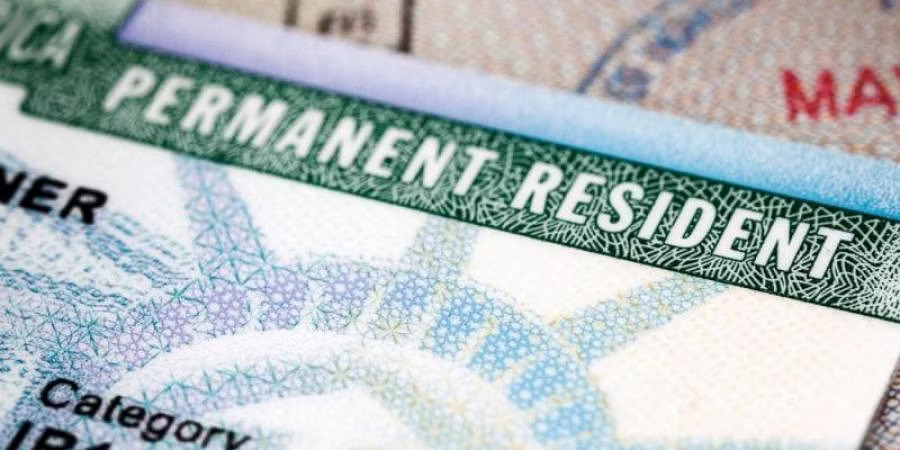
Introduction
The United States is often hailed as the land of opportunity, attracting immigrants from all corners of the globe in search of a better life. Two terms frequently discussed in this context are “immigrant visa” and “green card.” But are they the same, or are there distinctions worth exploring? In this article, we will delve into the intricacies of the U.S. immigration system, unraveling the connections and differences between an immigrant visa – green card.
I. The Immigrant Visa: Gateway to the United States
1.1 The Immigrant Visa Defined
An immigrant visa is the initial step toward establishing permanent residency in the United States. It is a legal document issued by the U.S. Department of State that authorizes an individual to enter the United States with the intention of becoming a lawful permanent resident. Immigrant visas are granted based on family sponsorship, employment opportunities, or participation in specific humanitarian programs.
1.2 Types of Immigrant Visas
The U.S. immigration system offers various categories of immigrant visas, each tailored to specific eligibility criteria. Some of the primary immigrant visa categories include:
-
Family-sponsored visas: Designed for individuals with close relatives who are either U.S. citizens or permanent residents.
-
Employment-based visas: Reserved for foreign nationals with job offers from U.S. employers or those possessing exceptional skills.
-
Diversity Visa (DV) program: This program allocates a limited number of immigrant visas through a lottery system to nationals from countries with historically low immigration rates to the United States.
-
Asylum and refugee visas: Aimed at individuals seeking protection in the U.S. due to persecution in their home countries.
II. The Green Card: A Symbol of Permanent Resident Status
2.1 Understanding the Green Card
A green card, formally known as a United States Permanent Resident Card, signifies that its holder has attained lawful permanent resident status in the United States. Owning a green card is often colloquially referred to as having “permanent residency” in the United States.
2.2 Transitioning to a Green Card
While an immigrant visa serves as the gateway to the United States, a green card signifies the transition from temporary immigrant status to lawful permanent residency. After entering the U.S. on an immigrant visa, individuals typically apply for a green card, marking their transition to permanent residents. This process involves filling out various forms, attending interviews, and undergoing background checks.
III. Immigrant Visa vs. Green Card: What Sets Them Apart?
3.1 Purpose and Duration
The principal distinction between an immigrant visa and a green card lies in their purpose and duration. An immigrant visa is a temporary visa issued to individuals who intend to immigrate to the United States. After entering the country on an immigrant visa, they must subsequently seek a green card to obtain permanent resident status.
3.2 Eligibility and Application Process
The eligibility criteria and application procedures for immigrant visas and green cards differ significantly. Immigrant visas often require sponsorship from family members or U.S. employers, while green card applicants must meet specific prerequisites tied to family relationships, employment opportunities, or humanitarian considerations.
3.3 Rights and Benefits
Green card holders enjoy certain rights and benefits that are not extended to immigrant visa holders. These privileges include the right to live and work indefinitely in the United States, access to most public benefits, and eligibility to apply for U.S. citizenship after fulfilling particular residency and other requisites. Immigrant visa holders generally have more limited rights and benefits in comparison.
IV. Transitioning from Immigrant Visa to Green Card
4.1 Consular Processing
After obtaining an immigrant visa, transitioning to permanent residency usually involves a process called consular processing. This process necessitates an interview at a U.S. embassy or consulate overseas. Once approved, the immigrant visa holder can enter the United States and commence the green card application process.
4.2 Adjustment of Status
In some cases, individuals may adjust their status to permanent residency while already in the United States, bypassing the need to leave the country. This procedure is referred to as “adjustment of status” and is typically available to individuals who entered the U.S. on specific types of visas, such as the K-1 visa for fiancés or fiancées of U.S. citizens.
V. Conclusion
To summarize, is immigrant visa a green card? these are distinct components of the U.S. immigration system, each serving a unique purpose. An immigrant visa is the first step, allowing individuals to enter the United States with the intention of becoming permanent residents. A green card, on the other hand, signifies permanent resident status. Transitioning from an immigrant visa to a green card is a significant milestone on the path to establishing roots in the United States. Understanding the differences and connections between these two concepts is vital for those navigating the complex U.S. immigration process.
While the process of obtaining an immigrant visa and a green card may appear intricate, it opens up numerous opportunities for individuals seeking a better life in the United States. By navigating the immigration system with the right information and support, many immigrants can fulfill their dreams of living and working in the land of opportunity.




